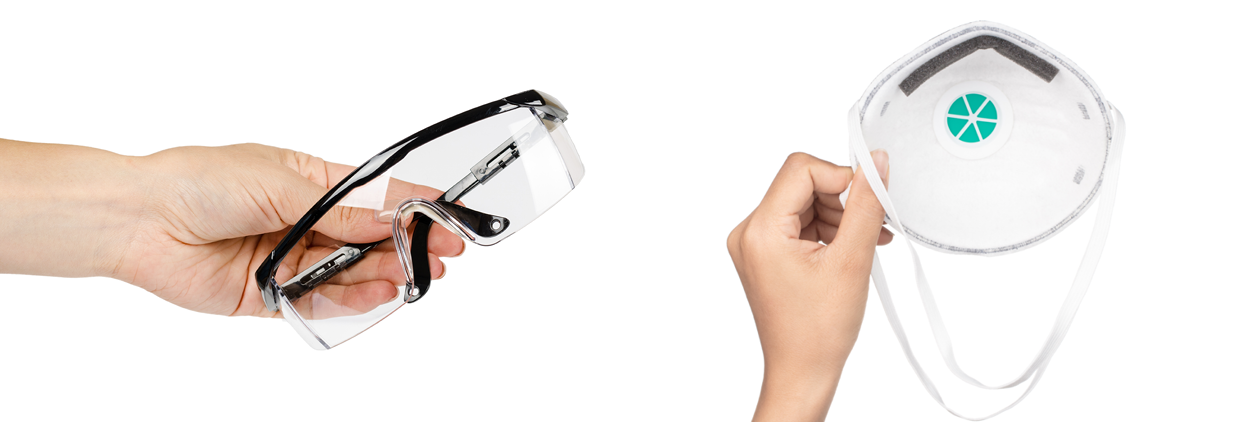From Realtà Mapei n° 36 - 1/17/2023
No matter how you look at it, we live in a chemical world. From salt to Super Glue, we work with all types of chemicals in our everyday life. This is especially true in the industry in which we operate. The challenge we face as a manufacturer of those materials is to provide required performance attributes for specific functions using chemical compounds in a safe manner. MAPEI understands the importance of knowing, explaining and informing about the relative hazards of the materials we make. MAPEI’s dedication to this aspect of our business includes an extensive staff of trained professionals that fully understands all the requirements for product labeling, whether the end user is a DIY consumer or a highly skilled professional.
The products we use today for the installation of floor coverings are considerably safer to use compared with products used in the past. For example, the use of solvent-based adhesives, which were a nightmare regarding flammability and inhalation toxicology, has been virtually regulated out of existence. Even nonflammable, solvent-based products based on trichloroethylene or trichloroethane cannot be sold due to toxicity issues as well as being major factors in destroying our much-needed ozone layer.
Today’s installation products, for the most part, no longer pose problems in terms of flammability nor do they pose severe health or environmental hazards, but they still are based on chemical compounds that need to be properly handled. The goal of every manufacturer of flooring-installation products is to develop the safest materials available and to inform you how best to use them.
So how can you protect yourself from the chemical compounds used to install flooring? Your two most important sources of this information can be found on product labels and Safety Data Sheets (SDSs).

Warnings and hazard information found on packaging labels are controlled by two governing bodies. The first is documented in the Globally Harmonized System of Classification and Labelling of Chemicals (GHS). The second set of rules used is provided by the U.S. Consumer Product Safety Commission (CPSC), which is defined by the Federal Hazardous Substances Act (FHSA). In Canada this type of information is controlled by the Hazardous Products Act (HPA) as well as the Consumer Packaging and Labelling Regulations (C.R.C., c. 417). The main difference between these two sets of regulations is that GHS deals with long-term, chronic exposure to chemicals, whereas the FHSA (USA) and the HPA (Canada) deal with acute or one-time exposure. Based on this distinction, you can see consumer-based warnings on products that reach the DIY or retail customer, whereas GHS information on packaging is more suited for commercial work.
GHS changed the rules on hazardous substances communication in the following ways:
Regarding hazard classification and packaging labeling requirements, GHS starts with a signal word that is usually either “Danger” or “Warning” combined with a pictogram of the type of hazard. These symbols and words can be placed anywhere on the package and do not have size requirements. A common set of GHS signal words and pictograms used in flooring adhesive formulations is the following, which indicates that the material may cause skin and eye irritation:

If you happen to be working with two-part epoxy adhesives on a project, the number of pictograms increases and the signal word can become more severe. With these types of adhesives, you may typically see the following:

These series of pictograms will tell you that the product is a health hazard, has a negative environmental aspect, and may cause serious health effects and ozone depletion.
Consumer Product Safety Commission requirements deal with hazard warnings that are a little more “in your face” and are always found on the front of the label or package. They are scaled to predetermined sizes based on label space. Here’s a summary of CPSC labeling requirements:

An example of a CPSC warning structure for a moisture-cured, urethane adhesive would be as shown above in Figure 1.
Here you will see the signal word “CAUTION” in very large print right on the front of the label and highly visible. And in this particular case you will see the influence of Canadian labeling requirements where all the words, whether they be English or French, are the exact same size. Next to the signal word you will find language relative to the type of hazard, in this case indicating that the product is an irritant to the eyes and respiratory system and that you should avoid contact with the skin.
The next logical question in finding, reading and understanding either a GHS or CPSC warning is what to do once you learn about it. That’s when the SDS comes into play. It is a federal mandate that every chemical compound be provided with a GHS-compliant Safety Data Sheet, which must contain 16 separate parts of information about the product. For our discussion on safe product use, we will focus on Section 8, which deals with Exposure Controls and Personal Protection. This SDS section contains information relative to Control Parameters (if any) and Individual Protection Measures that refer you to the required Personal Protection Equipment (PPE) when using the material. Common PPE for the floor-covering installer includes (but is not limited to) nitrile gloves, protective eyewear and respirators. You will also find this information on the product label in the product warning text, but it is important to remember that OSHA requirements regulate that the SDS be available and on site wherever these products are used and are the last word on any PPE requirements needed for safe use.
Having said all of this, it is extremely important to note that it is your responsibility to read, understand and act on this information. Manufacturers of chemical compounds used for construction purposes have teams of smart and informed people working on making this information accurate, readily available and pretty much “in your face.” But it is still your responsibility to read the product label, read the SDS, pay attention to Section 8 and follow what is recommended. Acting on this information is not really optional. It is provided for your safety and well-being. So please take those few short minutes to read and be informed, and then follow the directions and use the appropriate PPE.

About the author
Jeff Johnson is the Business Manager for MAPEI’s Floor Covering Installation Systems line. Jeff brings to the industry more than 35 years’ experience in the development and marketing of floor-covering installation products. Practical experience in the construction industry and as a bench chemist gives Jeff an insightful perspective on surface preparation, moisture mitigation and floor-covering installation.